07 Jun Article: Timeline of Brisbane City
Before Brisbane was riddled with glamorous buildings, fine dining restaurants and city cats, it was clustered with brick structures, convicts, Indigenous residents and British explorers.
Lets take a step back into history with a timeline of Brisbane which includes events that unfolded in the very beginning, and events that played an important role in moulding our heritage city.
________________________________
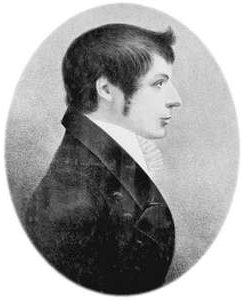
John Oxley – Surveyor-general and explorer.
1823 – John Oxley is sent from Sydney to find a secondary settlement area, finding himself exploring the Moreton Region and along the Brisbane river.
1824 – Lt. Henry Miller (The first commandant) arrives in Redcliffe along with soldiers, a storekeeper, and a family.
1824 – First settler is born in Moreton colony, named Amity Moreton Thompson.
1825 – Edmund Lockyer of 57th Regiment explores the Brisbane River. Edmund gave Redbank its official name after the colour of the soil.
1826 – Captain Patrick Logan, the 57th Regiment, takes over as Commandant of the Moreton colony.
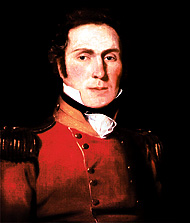
Captain Patrick Logan of the 57th Regiment, Commandant of the Moreton Colony.
1827 – Indigenous resistance leader “Napoleon” exiled to St Helena Island. From then on, there was constant conflict up until the 1840s.
1829 – The indigenous people of the Moreton Bay region are seriously affected by smallpox.
1830 – Captain Patrick Logan, Commandant of the Moreton Colony, was mysteriously murdered near the area known as “Esk”.
1831 – The Moreton Bay settlement populations reaches 1241, this includes approximately 1066 convicts.
1836 – It is reported by Quaker missionaries that the Moreton Bay indigenous population have been infected with venereal disease from American Whalers.
1837 – Penal settlement is officially closed.
1839 – Calls to cease the transportation of convicts is reigned successful. Moreton Bay is also closed as a penal settlement area. 2062 men served sentences at the settlement area, along with 150 women.
1841 – Indigenous people, Merridio and Nuegavil, are executed at Wickham Terrace Windmill for the
murder of Surveyor Stapylton and his assistant in Logan.
1842 – New South Wales Governor, George Gipps, proclaims Moreton Bay a free settlement.
1848 – The first 240 government-assisted British migrants arrive in Brisbane along with the arrival of the first Chinese labourers.
1849 – Government issues rations to help prevent the outbreak of starvation.
1849 – the Brisbane School of Arts is established.
1850 – Areas around Brisbane City such as Bulimba, Coorparoo, Enoggera, Nundah, Sherwood and Stafford are used for the purpose of agriculture and grazing up until the 1880s.
1851 – The influenza epidemic strikes Brisbane and lasts until 1852.
1855 – Approximately 1000 German migrants arrive in Brisbane after the introduction of compulsory military training and political unrest. Most of the 1000 migrants settled in the Nundah area.
1862 – Old Government House is officially established.
1864 – The Great Fire of Brisbane breaks out across the colony, destroying 50 homes, 2 banks, 3 hotels, and many more businesses across the CBD. Luckily, no one was killed, but few were taken to hospital with injuries.
If you have never heard of the Great Fire of Brisbane, it is probably due to the domination by the convict period, the obsession with bush rangers, and the gold rush.
1867 – Parliament House officially opens, but was not fully completed until around 1889 with each wing of the building being built at separate times.
1885 – Horse-drawn tram systems commence their operations as a way of transport for commuters around the City.
1893 – the “Black February” Brisbane flood takes place as 3 major cyclones hit Brisbane within the month of February – earning the famous name “Black February”.
1897 – Electric trams are introduced to Brisbane to operate along side the horse-drawn trams. These trams helped the people of Brisbane to commute around the CBD at a more convenient pace.
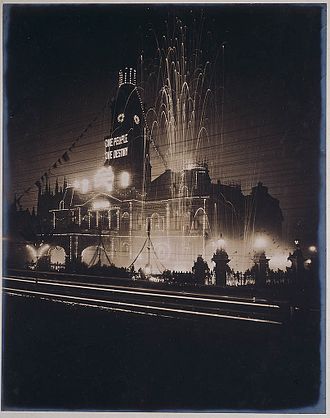
The Sydney Town Hall illuminated in celebratory lights and fireworks marking the Inauguration of the Commonwealth of Australia, 1901. The sign reads One people, one destiny.
1901 – Celebrations are held on New Years Day to mark the Federation of Australia, the process by which the six separate British self-governing colonies of Queensland, New South Wales, Victoria, Tasmania, South Australia, And Western Australia agreed to unite and form the Commonwealth of Australia.
1902 – The Central Railway Station in Ann Street, Brisbane is officially completed and the Government of Queensland officially designates Brisbane as a City. (Brisbane was named after Sir Thomas Makdougall Brisbane, who was a noted astronomer and sixth Governor of New South Wales from 1821 to 1825.)
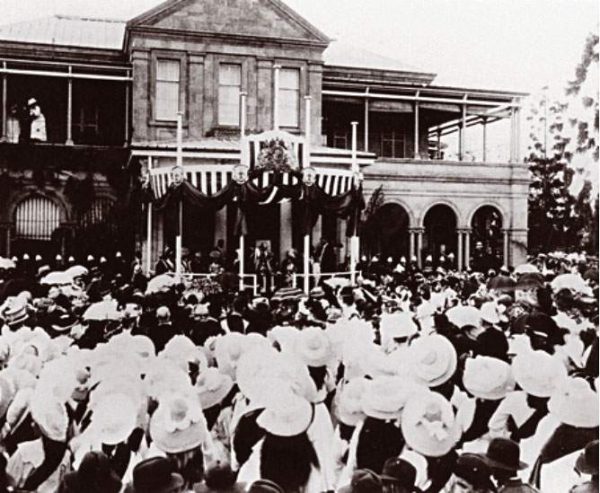
UQ establishment on George St, Brisbane before its move to St Lucia in 1946
1909 – Government House opens at Bardon, University of Queensland opens near Parliament House but is later moved to St Lucia in 1946, completing the move in 1972.
1927 – The Lone Pine Koala Sanctuary is founded, taking in koalas that are sick, injured, or orphaned, at a time where the animals were being culled for their fur.
1930 – Brisbane City Hall officially opens by the Governor of Queensland, Sir John Goodwin. The new structure takes up two acres of land and is recognised as one of Australia’s most outstanding buildings.
1940 – The Story Bridge is officially open for operation, claiming to be the second largest bridge in Australia after the Sydney Harbour Bridge – making it the seventh largest bridge, of its kind, in the world.
1942 – November 26th to the 27th, Australian servicemen and civilians riot against United States military personnel in Brisbane, Queensland’s capital. One Australian soldier dies, and hundreds of Australian and US servicemen are injured. The cause of this riot was reported to be as a result of arrogance shown by a man named Private Anthony E. O’Sullivan of the U.S. 814th Military Police Company. A brawl broke out between O’Sullivan and Australian military person when O’Sullivan threatened to strike one of the Australians a fellow American, Private James R. Stein of the U.S. 404th Signal Company broke out, with Australia military personnel trying to defend Private James R. Stein from O’Sullivan’s attack.
These events are only few that make up the history of our city. Brisbane continues to grow at a rapid pace every day, month, and year. Brisbane now holds an incredible population of 2.4 million people, an exceedingly drastic growth since 1859 (which had an estimated population of just 5,000 people) 27 years after Brisbane was founded.
References:
Wiki.beyondthesunset.org.au. (2014). Brisbane New World of Darkness Historic Timeline – BtS Wiki. [online] Available at: http://wiki.beyondthesunset.org.au/index.php?
title=Brisbane_New_World_of_Darkness_Historic_Timeline [Accessed 7 Jun. 2019].En.wikipedia.org. (n.d.). Parliament House, Canberra. [online] Available at: https://en.wikipedia.org/wiki/Parliament_House,_Canberra [Accessed 7 Jun. 2019].
Knowledge.aidr.org.au. (n.d.). Black February Flood, 1893 | Australian Disaster Resilience Knowledge Hub. [online] Available at: h
ttps://knowledge.aidr.org.au/resources/black-february-flood-1893/ [Accessed 7 Jun. 2019].
En.wikipedia.org. (n.d.). Federation of Australia. [online] Available at: https://en.wikipedia.org/wiki/Federation_of_Australia [Accessed 7 Jun. 2019].
Richardson, D. (2013). The Great Fire of Brisbane in 1864. [online] Ashgrovehistoricalsociety.org. Available at: http://www.ashgrovehistoricalsociety.org/index.php/articles/46-the-great-fire-of-brisbane-in-1864 [Accessed 7 Jun. 2019].
Boggoroadgaol.com.au. (n.d.). The Gallows of the Old Windmill Tower. [online] Available at: https://www.boggoroadgaol.com.au/2018/07/windmill.html [Accessed 7 Jun. 2019].
Brisbane.qld.gov.au. (n.d.). Council history | Brisbane City Council. [online] Available at: https://www.brisbane.qld.gov.au/about-council/council-information-and-rates/council-history [Accessed 7 Jun. 2019].
Museumofbrisbane.com.au. (n.d.). Building the Story Bridge – Museum of Brisbane. [online] Available at: https://www.museumofbrisbane.com.au/blog/story-bridge/ [Accessed 7 Jun. 2019].
Qgso.qld.gov.au. (2017). Data Tables: Historical tables, demography, 1823 to 2008 (Q150 release) (QGSO, Queensland Treasury and Trade). [online] Available at: http://www.qgso.qld.gov.au/products/tables/historical-tables-demography/index.php [Accessed 7 Jun. 2019].
En.wikipedia.org. (n.d.). Central railway station, Brisbane. [online] Available at: https://en.wikipedia.org/wiki/Central_railway_station,_Brisbane [Accessed 7 Jun. 2019].
En.wikipedia.org. (n.d.). Redbank, Queensland. [online] Available at: https://en.wikipedia.org/wiki/Redbank,_Queensland [Accessed 7 Jun. 2019].
Nma.gov.au. (n.d.). Smallpox epidemic | National Museum of Australia. [online] Available at: https://www.nma.gov.au/defining-moments/resources/smallpox-epidemic [Accessed 7 Jun. 2019].
Campbell, J. (2009). Smallpox in Aboriginal Australia, 1829–31. [online] Taylor & Francis. Available at: https://www.tandfonline.com/doi/abs/10.1080/10314618308682899?journalCode=rahs19 [Accessed 7 Jun. 2019].
Nationalunitygovernment.org. (n.d.). The Freedom Fighters – Tunnerminnerwait and Maulboyheener | Sovereign Union – First Nations Asserting Sovereignty. [online] Available at: http://nationalunitygovernment.org/content/freedom-fighters-lest-we-forget [Accessed 7 Jun. 2019].
Louis R. Cranfield, ‘Logan, Patrick (1791–1830)’, Australian Dictionary of Biography, National Centre of Biography, Australian National University, http://adb.anu.edu.au/biography/logan-patrick-2367/text3107, published first in hardcopy 1967, [Accessed online 7 June 2019].
En.wikipedia.org. (n.d.). Battle of Brisbane. [online] Available at: https://en.wikipedia.org/wiki/Battle_of_Brisbane [Accessed 10 Jul. 2019].






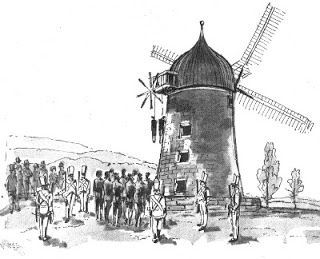
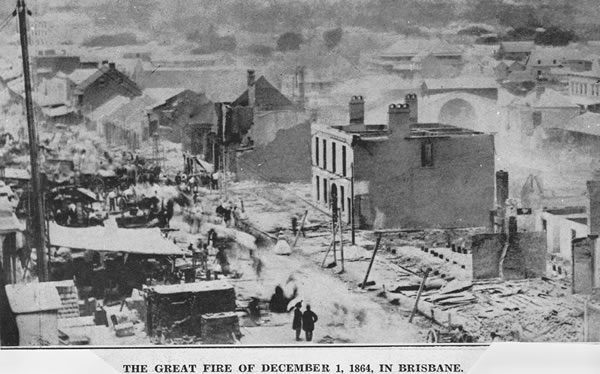
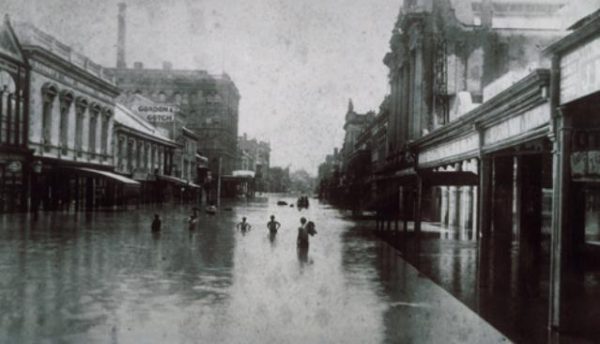

No Comments